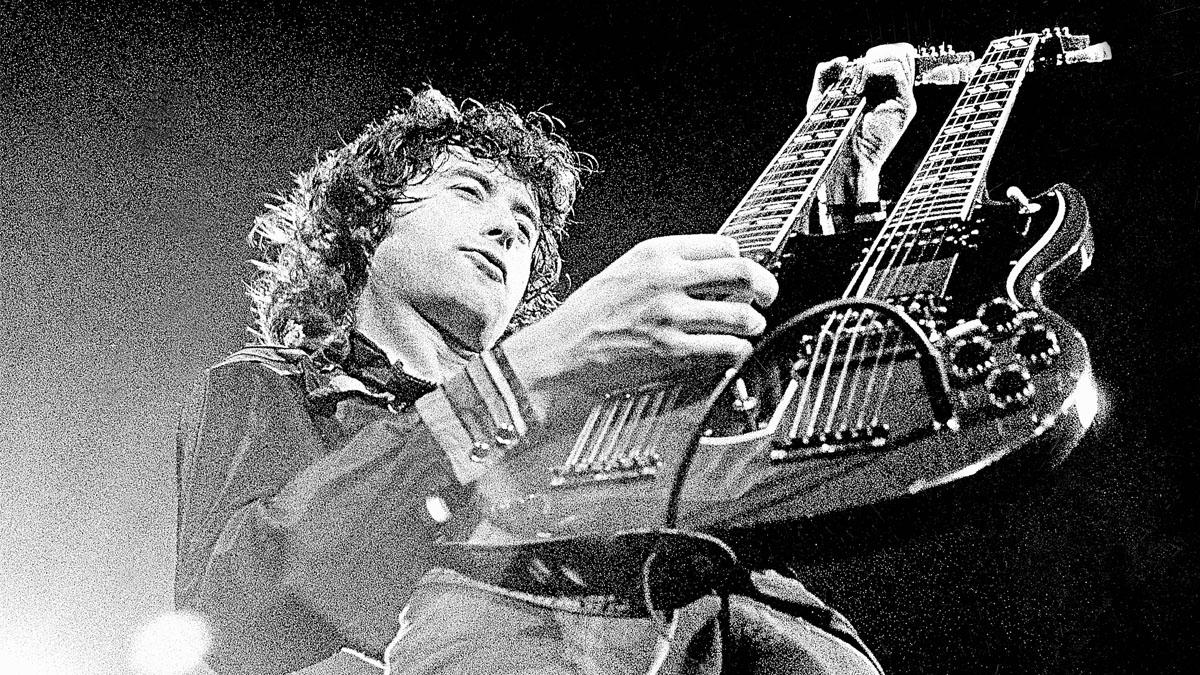Jimmy Page talks about Roger Mayer bringing the distortion pedal into his life
"When I started taking it to sessions, the other guitarists were blown away," says the Led Zep guitarist in an interview with Uncut

Jimmy Page has spoken about his friend Roger Mayer's influence on his tone when the "boffin" from the British Admiralty hooked him up with a new-fangled electronic solution that would soon be on every rock guitarist's pedalboard, the distortion pedal.
In a wide-ranging interview with Michael Bonner of Uncut Magazine, Page discusses his early career as a session player, Robert Plant, Led Zeppelin's formidable legacy and the importance of telling his side of their story, and how Mayer's electrical engineering wizardry revolutionised his tone and the sound of rock music forever.
"It was a pivotal moment for my sound," says Page. "I met this guy called Roger Mayer at a gig in Surbiton. He worked for the Admiralty and he was a boffin, really, into his music. He asked me if I needed anything for my guitar. He came over to my house one day and I played him a song with electric distortion and said, ‘I want to find a way to sustain it.’ He went away and came back with this box with an on/off switch – that meant you could control the distortion."
Back then, guitar amplifiers did not come with master volume controls, and guitarists used all kinds of techniques to get a distorted tone – slashed speakers, poking pencils through the cone, or running some sort of preamp in front of their guitar amp to drive the valves harder.
It was phenomenal. When I started taking it to sessions, the other guitarists were blown away. The blood drained from their faces
Jimmy Page on Mayer's distortion pedal
For Page, and every other guitarist playing in a time before the ability to create distortion without diming their amp and playing at ear-bleeding volume was a game changer.
"It was phenomenal," adds Page. "When I started taking it to sessions, the other guitarists were blown away. The blood drained from their faces – but the guys doing the arrangements loved it."
In the Uncut interview, Page also reveals that he was less impressed by Mayer's "other box" a modulator. "It was difficult to control in the studio from the guitar, so I said it wasn’t for me," says Page. Mayer then took it to Jimi Hendrix in 1967 and it became the Octavia and was used on Purple Haze.
Get the MusicRadar Newsletter
Want all the hottest music and gear news, reviews, deals, features and more, direct to your inbox? Sign up here.
Accounts vary as to who invented the distortion pedal. Mayer first made pedals for Page in 1964. Orville "Red" Rhodes built a pedal for The Ventures for their 1962 single 2000lb Bee, after they wanted to recreate session player Grady Martin's faulty preamp fuzz tone on the Marty Robbins hit Don't Worry.
And so Red's 2000 Pound Bee fuzz box is said to be the first in pedal form. News of such technological milestones were slow to travel in those days, however, and it seems unlikely that British guitarists of that era would have been aware that such tech existed.
Arguably the first commercially available distortion/fuzz pedal was Gibson's Maestro FZ-1 Fuzz-Tone, and they even made a demo for it that was released on vinyl in 1962. No YouTube in those days. This rarity was unearthed by JHS Pedals' Josh Scott.
The Maestro Fuzz-Tone was famously used by Keith Richards on the Stones' (I Can't Get No) Satisfaction, but was largely a commercial failure. Why? Well, maybe because it was marketed as offering a tone reminiscent of a brass instrument, not for skronky fuzz – a case of the technology existing before it found its true purpose.
Times have changed. If Gibson were to reissue one – and who knows, they might, with CMO Cesar Gueikian recently posting a pic of some archive treasure he found the other day that included an early FuzzTone plate – it's fair to say it would be big news, and using it to play trumpet licks on guitar would not be the first thing on our minds.
Jonathan Horsley has been writing about guitars and guitar culture since 2005, playing them since 1990, and regularly contributes to MusicRadar, Total Guitar and Guitar World. He uses Jazz III nylon picks, 10s during the week, 9s at the weekend, and shamefully still struggles with rhythm figure one of Van Halen’s Panama.












